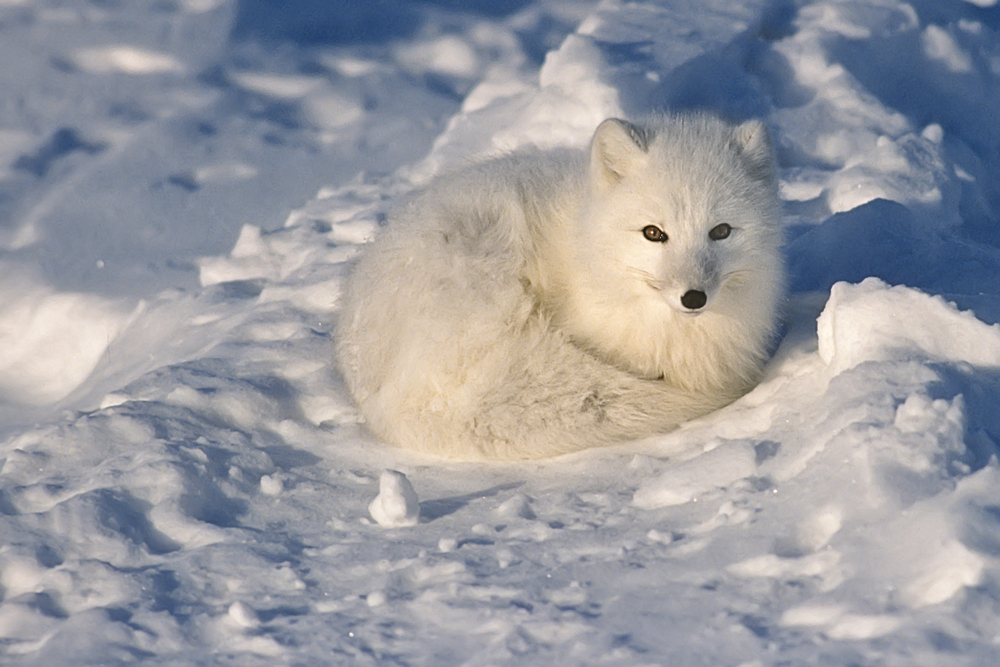Facts You Didn’t Know About Arctic Foxes
Ever seen a white fox? You might if you head North of the Arctic circle! The icy environments in our Northern polar region are what the Arctic fox calls home. These so-called ‘Champions of the Cold’ live mostly in coastal regions anywhere from Canada, Europe, Greenland, and Iceland to Russia. While approximately the size of a large domestic cat, they are related to other types of foxes, wolves, and dogs.
Keep reading if you are keen to hear more facts about Arctic foxes that you probably didn’t know before!
101 – how to master the cold
They aren’t called ‘Champions of the Cold’ for nothing! Arctic foxes are perfectly adapted to the harsh conditions of the freezing Arctic. Their super thick fur provides them insulation, and Mother Nature designed their legs and ears extra short to reduce the total body surface to avoid heat loss. On top of that, an Arctic fox’s fur does not only cover its body but also its feet like built-in snow boots. Their fluffy tail makes up about a third of their entire body length. This comes in handy while sleeping, as it can be used as a blanket and extra layer to protect our furry friends from the cold.
Head first into the snow
Arctic foxes have gained quite the media attention when videos went viral of them on the hunt. It is indeed quite funny to watch an Arctic fox pulling off one of their many hunting techniques, namely the famous plunge-dive. Since lemmings are not only right at the top of the fox’s menu but also a real challenge to catch, the Arctic fox has to get creative: It listens for lemmings hiding in their complex underground tunnel systems. Once their prey is located, the Arctic fox jumps high up in the air only to nose-dive right into the snow to catch their prey! Sometimes even a few times in a row. Not the technique with the highest success rate, but definitely worth a try!
Check out this video of a plunge-diving Arctic fox for a good laugh and to see what we are talking about.
They have an extensive meal plan
Talk about hunting – what else is on the menu for the Arctic fox? That’s an easy one because Arctic foxes are everything but picky. Besides lemmings, they also feed on rodents, birds, insects, fruit, and even carrion. Arctic foxes are known to be opportunistic omnivores and spend a great deal of their time hunting. Being home to the Arctic tundra where food can be scarce (especially during winter), the monogamous fox cannot afford to be picky. Clever as they are, they will stash provisions under rocks during summer to feed on them during winter.
Chameleons of the Arctic
Not only saves the thick fur their lives in freezing temperatures, but it also allows them to blend into their environment. In fact, this camouflage is of great help to avoid predators such as polar bears, wolves, and golden eagles. Here comes the best part: Their fur adapts depending on the season! During winter, an Arctic fox wears a thick white coat to blend into the snowy surroundings. During summer, on the other hand, they shed this coat to a shorter, brownish/greyish fur to camouflage with the rocks and plants.
Next-level hunting tip – let someone else do it for you!
As you might have noticed by now, Arctic foxes have some cheeky survival techniques up their sleeves! Another one of them is that they sometimes let polar bears, their main predator, do the dirty work. Particularly during times of prey scarcity, they might follow the white giants on their hunting trips. Once the polar bear has vanished from feeding on its prey, the Arctic fox will snack on the leftover scraps. Talk about resourceful thinking!

The bottom line is: Arctic foxes are pretty cheeky creatures, and they truly are the champions of the cold!
Fancy seeing them in their natural habitat? Explore the Arctic on one of our amazing cruises and get the chance to spot some unique polar wildlife.
Find out more on our website and contact our helpful team to arrange your trip of a lifetime!

Talk to one of our experienced Destination Specialists to turn your Antarctic, Arctic and South American dream into a reality.
Contact us